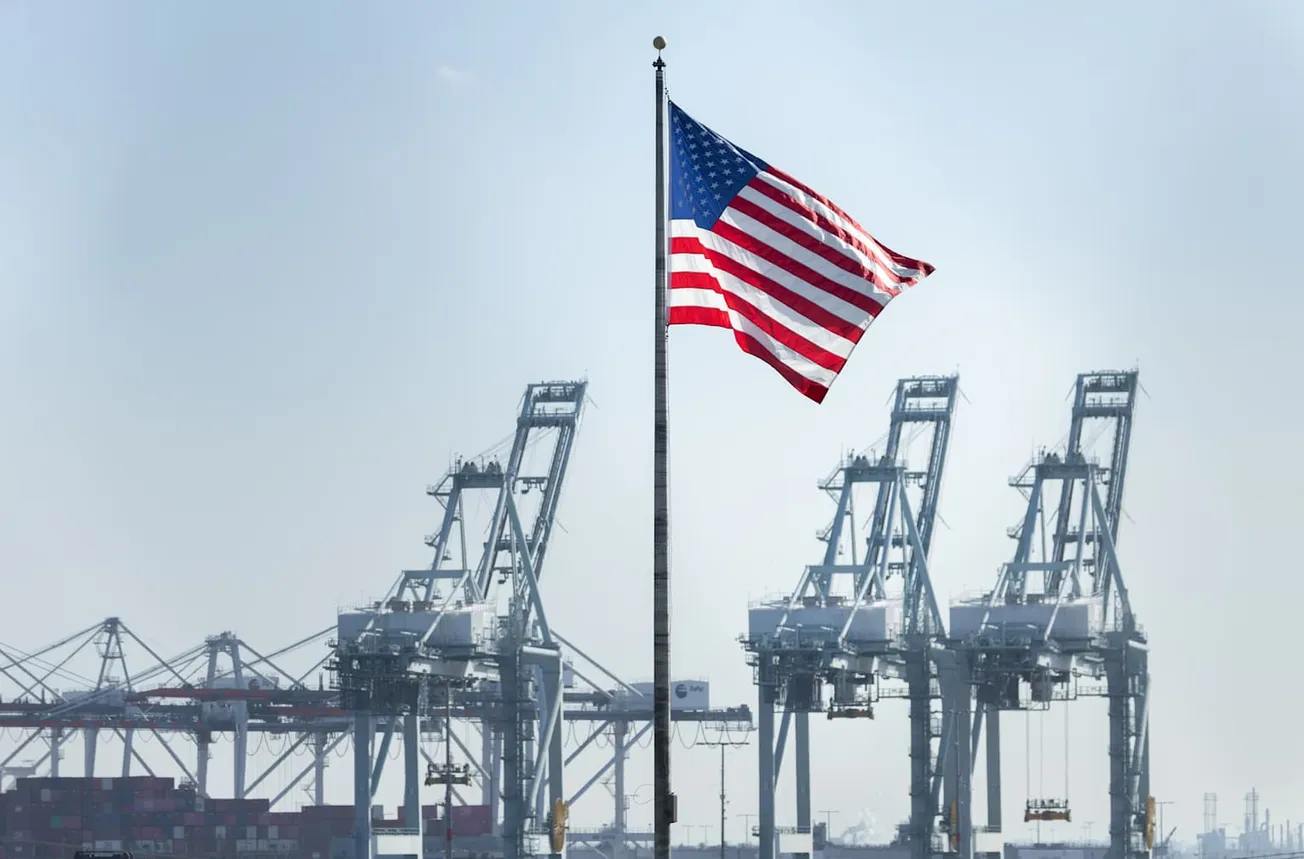Table of Contents
The US economy contracted by 0.3% in the first quarter of 2025, marking the first decline in three years and signaling a dramatic shift brought on by President Trump’s sweeping tariffs. As businesses raced to import goods before tariffs took effect, the resulting trade imbalance and economic uncertainty have set the stage for a turbulent year ahead.
Key Takeaways
- US GDP fell 0.3% in Q1 2025, the first contraction since early 2022, due to a surge in pre-tariff imports.
- Businesses front-loaded imports to avoid steep new tariffs, driving the trade deficit to record highs.
- The tariff policy is projected to reduce long-run GDP by 6% and wages by 5%, with substantial household losses.
- Consumer spending slowed and government expenditures declined, while business investment temporarily rose.
- Stock markets reacted negatively, and economists warn of stagnation or recession if tariffs persist.
- Tariffs are expected to raise over $5 trillion in revenue but at the cost of higher prices and reduced economic activity.
- The pre-tariff import surge masked underlying economic weakness and distorted growth figures.
- Experts forecast a challenging year ahead, with the potential for empty shelves and further economic slowdown.
- The sweeping tariffs remain suspended for 90 days, but uncertainty continues to weigh on business decisions.
A Historic Import Surge and Its Ripple Effects
- In early 2025, US businesses rushed to import goods before President Trump’s tariffs took effect, leading to a record trade deficit and the largest monthly import total since tracking began in 2002.
- January imports soared to $320 billion, with continued high levels in February and March, especially from China, Canada, and Mexico.
- This “frontloading” was driven by fears of tariffs as high as 145% on Chinese goods and at least 10% on most other imports.
- The surge in imports subtracted nearly five percentage points from GDP growth calculations, overwhelming other positive economic factors.
- Major ports reported dramatic shifts, with the Port of Los Angeles expecting a 35% drop in arrivals following the rush, and container bookings from China to the US plunging by as much as 60%.
- Economists warn that after the stockpiled inventory is depleted, consumers may face shortages of products like furniture, auto parts, clothing, and footwear by summer 2025.
The import surge was a direct response to policy uncertainty, distorting economic data and setting up potential supply chain disruptions later in the year.
Trump’s Tariffs: Policy Details and Economic Projections
- On April 2, 2025, President Trump signed an executive order imposing a minimum 10% tariff on all US imports, with rates up to 50% on goods from 57 targeted countries.
- Tariffs on Chinese products escalated from 10% to 20% in March, with some rates reaching 145% by mid-month.
- The Wharton Budget Model projects that these tariffs will reduce long-run GDP by about 6% and wages by 5%.
- Over the next decade, tariffs are expected to raise $4.5–$5.2 trillion in revenue, but at the cost of $6.9 trillion in reduced imports and a $22,000 lifetime loss for a typical middle-income household.
- The economic harm from tariffs is estimated to be twice as large as that from a comparable corporate tax increase.
- Tariffs are also expected to raise consumer prices by 2.3%, with some sectors like apparel seeing price hikes of 17%.
While tariffs may help reduce federal debt, they do so by shrinking economic activity, raising prices, and lowering household purchasing power.
GDP Contraction: Breaking Down the Numbers
- The 0.3% annualized decline in GDP reversed the 2.4% growth seen in Q4 2024 and fell well short of economists’ forecasts for continued expansion.
- The contraction was driven primarily by the record surge in imports, which count as a subtraction in GDP calculations.
- Federal government spending fell by 5.1%, adding further drag to growth.
- Consumer spending growth slowed to 1.8%, its weakest pace since mid-2023, as households grew cautious amid rising prices and uncertainty.
- Business investment provided a temporary boost, with equipment purchases up 22.5%, but this was largely a result of companies racing to beat the tariff deadlines.
- The price index for gross domestic purchases rose 3.4%, up from 2.2% in the previous quarter, reflecting mounting inflation pressures.
Analysts note that the GDP decline was “entirely attributed to tariff-related disruptions,” and that underlying growth momentum was already slowing prior to the policy upheaval.
Stock Market and Consumer Reactions
- News of the GDP contraction sent stock prices lower, reflecting investor concerns about future growth and profitability.
- A recent survey indicated that 39% of Americans are taking on additional jobs to cope with rising costs from tariffs.
- Consumer confidence has declined, with many households bracing for higher prices and reduced access to imported goods.
- Economists predict that if tariffs remain in place, a period of economic stagnation or even a mild recession is likely, especially if reciprocal tariffs are enacted by US trading partners.
The economic uncertainty is prompting both businesses and consumers to tighten budgets and delay major purchases.
Outlook: What’s Next for the US Economy?
- The sweeping tariffs have been temporarily suspended for 90 days to allow for negotiations, but the threat of higher import costs continues to cloud the outlook.
- Experts forecast that GDP growth will slow further in 2025, with some predicting stagnation or a mild recession if tariffs are not lifted or mitigated.
- Once the effects of the import surge fade, the economy may face shortages, higher prices, and weaker consumer spending.
- The long-term impact of tariffs is expected to be a persistently smaller US economy, with annual output losses of $100–$180 billion.
- Policymakers and business leaders are closely watching trade negotiations and supply chain developments as they plan for the rest of the year.
The coming months will test the resilience of the US economy as it adapts to new trade realities and ongoing policy uncertainty.
The US economy’s 0.3% contraction in early 2025 underscores the far-reaching effects of Trump’s tariffs and the unprecedented import surge they triggered. As the nation navigates this period of adjustment, the path forward will hinge on trade negotiations, consumer resilience, and the ability to restore economic momentum.
Sources consulted: CNN, CBS, The Hill, The Washington Post, Fox Business








